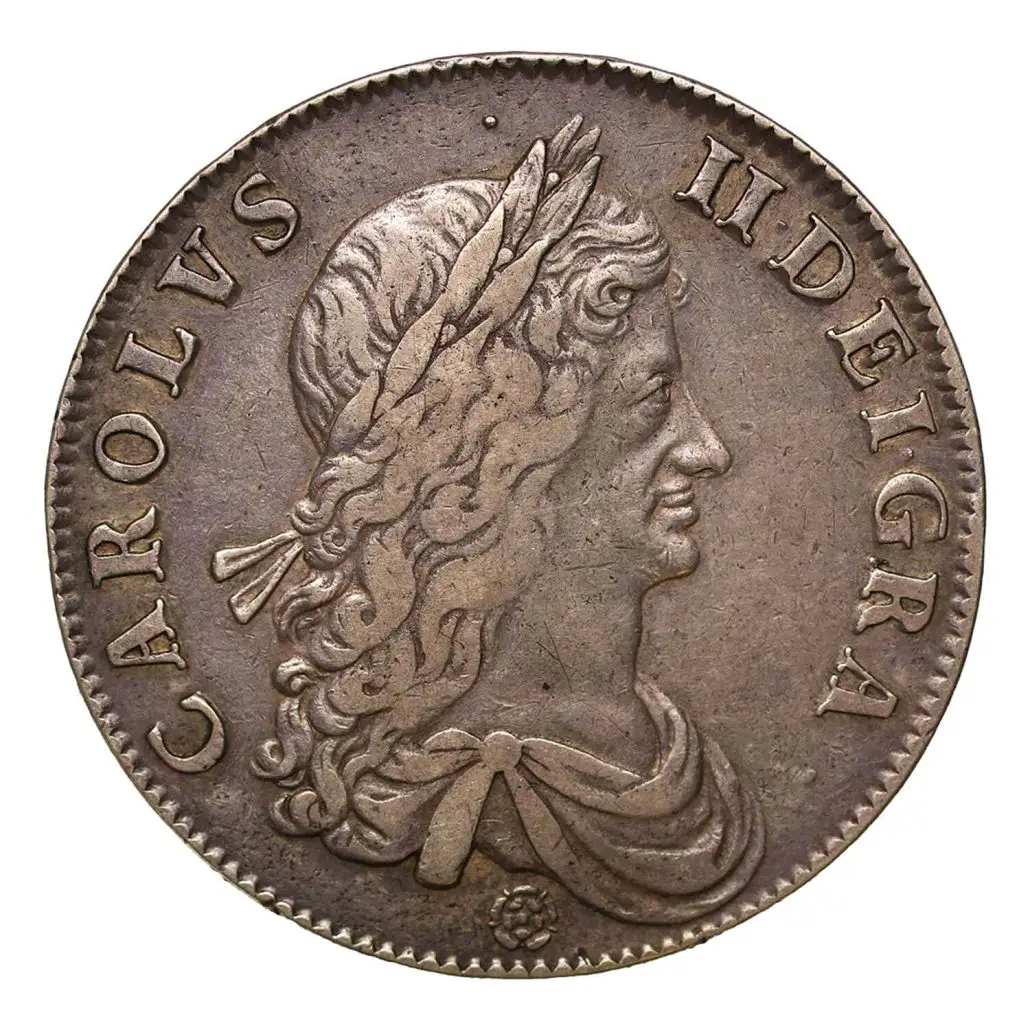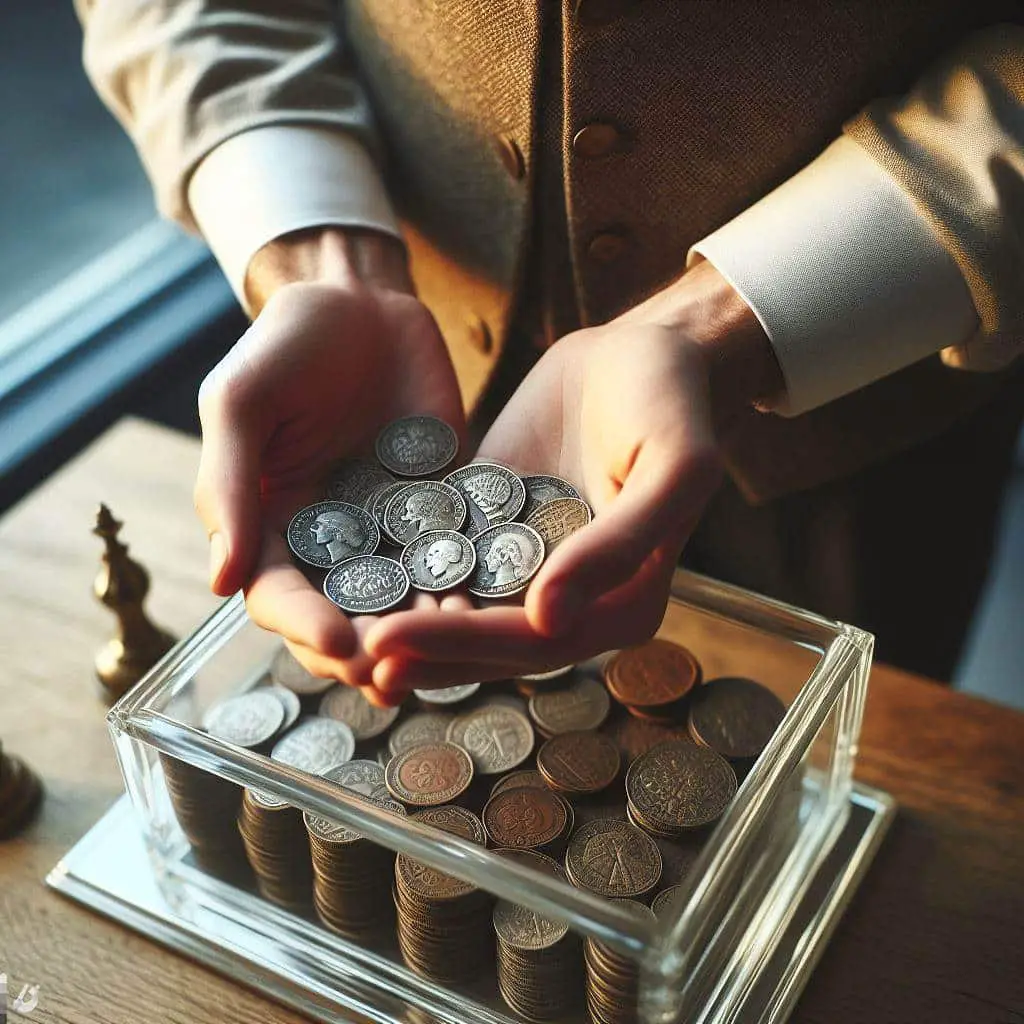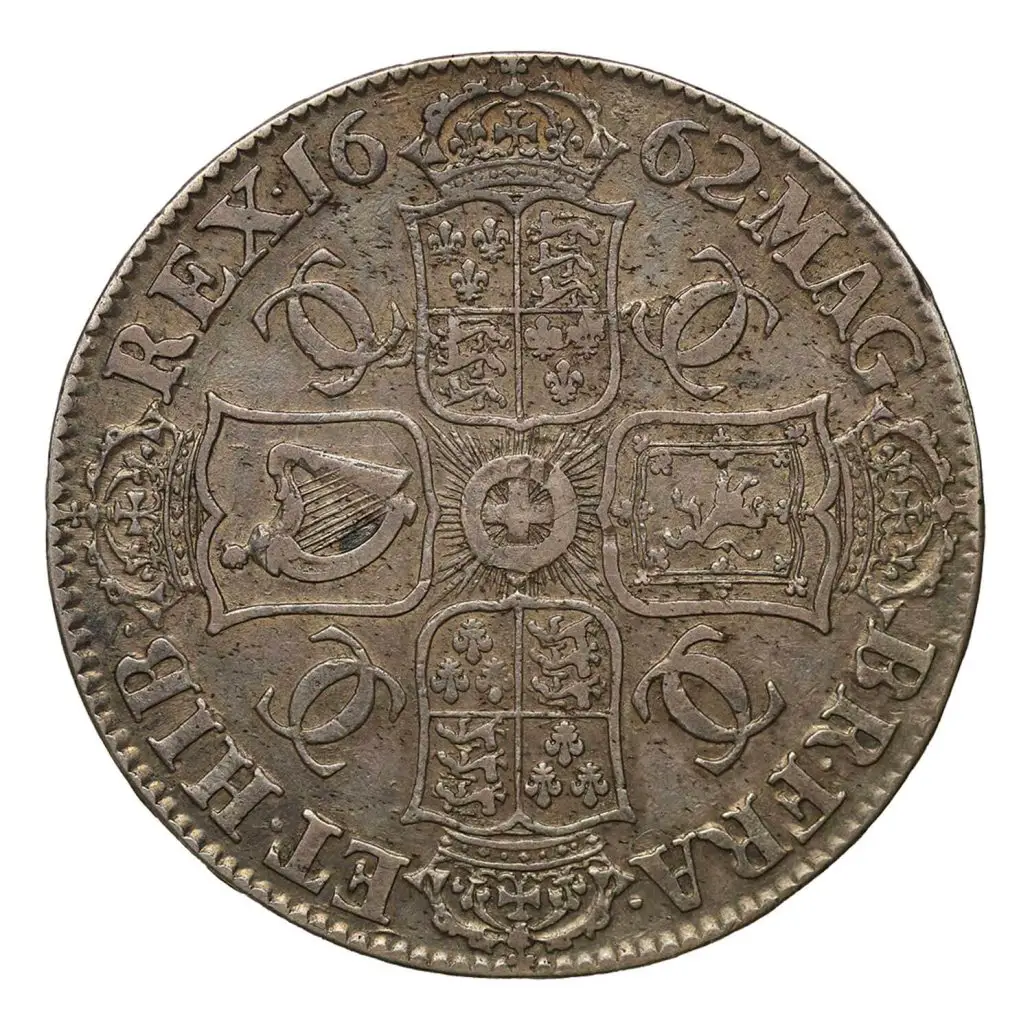Are you a history enthusiast or a collector of ancient coins? If so, you may have come across the intriguing 1662 Charles II Crown. This significant coin, the first milled crown issued by Charles II, King of Great Britain, France, and Ireland, bears unique features—a distinctive bust and a rose below. The 1662 Charles II Crown encapsulates the essence of its era, a captivating piece of history. In this guide, we’ll explore its historical context, distinctive traits, and potential value in detail. Join us on this journey as we unlock the secrets of the 1662 Charles II Crown.
Historical Context: The Rise of the Milled Coinage
During the latter part of the year 1662, the English coinage system underwent a significant change. The introduction of machine-made “milled” coins marked a new era in currency production. The 1662 Charles II Crown holds the distinction of being the first denomination issued using this revolutionary method. Subsequently, smaller denominations of Halfcrown, Shilling, Sixpence, and Twopence followed in subsequent years. A specific event in history can attribute the decision to start with the silver Crowns.
In 1662, King Charles II made a significant transaction, selling Dunkirk back to the French for a staggering five million French Livres. This sale flooded the Mint with silver that needed conversion into British silver. Reportedly, 1,500,000 silver Ecus arrived in 300 chests, totaling 108,636 pounds, between December 1662 and mid-1663. The Crown, the largest silver denomination, efficiently absorbed this abundant supply.
The Distinct Varieties of the 1662 Charles II Crown
The 1662 Charles II Crown exhibits two distinct varieties, along with several minor variations. One significant difference lies in whether the coin carries a rose under the bust or not. There have been various speculations surrounding the significance of the rose. Some believe that it indicates silver supplied from the west country of England. However, this theory is largely based on assumptions and extrapolation from the use of the rose mint mark for provincial silver coins in the reign of Charles I, twenty years earlier.
According to Alan Broad, in his article “1662 Rose below,” the rose mint mark may have been more likely associated with the recoining of the old Commonwealth hammered cross and harp money. This theory is further supported by Graham Birch in his book “The Metal in Britain’s Coins” in Chapter 16, “The Enigmatic Roses Coins.” Though research is ongoing, definitive documentary evidence is yet to be found, leaving room for continued exploration and discovery.
The Engravers: Roettier Brothers and Thomas Simon
The production of the 1662 Charles II Crown was overseen by the Roettier brothers, who had gained prominence as engravers during Charles II’s exile in the Parliamentarian period. Charles II held the Roettier brothers in high regard and had promised them positions at his Mint upon his restoration. This promise led to a competition in 1663 between the Roettiers and the highly regarded former Parliamentarian engraver, Thomas Simon.
Unfortunately for Simon, his previous association with Oliver Cromwell and the Parliamentarian forces proved to be detrimental to his position.
Despite creating the magnificent “Petition Crown” dated 1663, considered a masterpiece of milled engraving, Simon couldn’t secure a permanent role at the Mint.
On the other hand, the Mint favored the Roettiers as engravers for the Crown and entrusted them with producing the first milled Crowns.
Unveiling the Design: Obverse and Reverse
The obverse features a laureate and draped bust of King Charles II facing right, surrounded by a toothed border for decoration. The Latin legends on the obverse translate as “Charles the Second, by the grace of God.”
On the reverse, the coin showcases crowned cruciform shields with interlinked pairs of Cs in the angles, along with a garter star symbolizing the Order of the Garter at the center. The Latin legend surrounding the reverse translates as “King of Great Britain, France, and Ireland.” Notably, the coin’s edge bears the inscription “An ornament and a safeguard,” highlighting its role in preventing clipping or mutilation by unscrupulous individuals.
| Obverse | Reverse |
|---|---|
| Laureate and draped bust of King Charles II | Crowned cruciform shields |
| Toothed border | Interlinked pairs of Cs in angles |
| Latin legends: “Charles the Second, by the grace of God” | Garter star at the center |
| Latin legend: “King of Great Britain, France and Ireland” | |
| Edge inscription: “An ornament and a safeguard” |

Evaluating the Value of the 1662 Charles II Crown
Determining the value of a historical coin like the 1662 Charles II Crown can be a complex task. Several factors come into play, including its rarity, condition, historical significance, and current market demand. As the first milled Crown issued by Charles II, this coin holds immense historical value. Its association with the sale of Dunkirk and the influx of silver into the Mint adds further significance to its story.
The rarity of this coin also contributes to its value. With two distinct varieties and minor variations, collectors and numismatists are often on the lookout for specific characteristics that make a particular coin unique. The presence or absence of the rose under the bust adds an interesting dimension, making some variations more sought after than others.
When evaluating the condition of the 1662 Charles II Crown, factors such as wear, toning, and overall preservation come into play. A coin in excellent condition, with sharp details and minimal signs of wear, will generally command a higher value. However, it is important to note that even coins in lower grades can hold significant historical value and appeal to collectors.
The Market for the 1662 Charles II Crown
The market for ancient coins, including the 1662 Charles II Crown, is a vibrant and dynamic one. Collectors, investors, and enthusiasts from around the world actively participate in buying and selling these historical treasures. The value of a specific coin can fluctuate based on factors such as market trends, rarity, condition, and demand.
If you are considering selling or purchasing a 1662 Charles II Crown, it is advisable to consult with reputable coin dealers or auction houses specializing in ancient coins. These experts can provide insights into the current market conditions and help you make informed decisions.
The Joy of Collecting: A Treasure or a Piece of History?
Whether you possess a 1662 Charles II Crown or are simply curious about ancient coins, the joy of collecting lies in the discovery and appreciation of history. Each coin tells a unique story, connecting us to the past and the people who lived during that time. The 1662 Charles II Crown, with its intricate design, historical context, and rich symbolism, is a true testament to the artistry and craftsmanship of its era.
So, is the 1662 Charles II Crown a valuable treasure or just a piece of history? The answer lies in the eyes of the beholder. For collectors and enthusiasts, its historical significance, rarity, and unique design make it a highly desirable coin. However, even if its monetary value may fluctuate, its value as a piece of history remains constant. Owning a 1662 Charles II Crown allows us to hold a tangible link to the past, an artifact that embodies the legacy of an era long gone.
Explore the world of ancient coins and remember: their true value isn’t just in their monetary worth, but also in the stories they carry and the connections they create across generations. Embrace the joy of collecting, and may your journey be filled with fascinating discoveries and cherished treasures.

